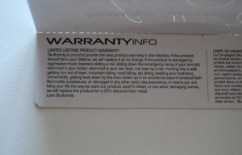Last week, I discussed the statute of limitations and how it is generally applied to North Carolina construction projects. Today, I want to introduce you to another important concept: the statute of repose.
What is the Statute of Repose?
The Statute of Repose is another time-barring statute within which your claim must fit. Like the statute of limitations, it depends on what state’s law will apply to your case, which is usually, but not always, the state where the project is located.
The Statute of Repose, under N.C. Gen. Stat. §1-50(a)(5)(a) provides:
“No action to recover damages based upon or arising out of the defective or unsafe conditions of an improvement to real property shall be brought more than six years from the later of the specific last act or omission of the defendant giving rise to the cause of action or substantial completion of the improvement.”
When does it run for North Carolina construction projects?
The Statute of Repose in North Carolina for improvements to real property is currently six (6) years from substantial completion or the last specific act or omission of the defendant, whichever is later. N.C. Gen. Stat. §1-50(a)(5)(a); Nolan v. Paramount Homes, Inc., 135 N.C. App 73, 518 S.E.2d 789 (1999). Once you have been off of a job for 6 years, you cannot (successfully) be sued for any construction defect, regardless of when the defect was or is discovered. It is an extreme, bright line bar to any claim after that time; that is, it puts your risk to bed.
How is it different from the Statute of Limitations?
Unlike the Statute of Limitations, the Statute of Repose starts running whether or not you are aware of any defect. Bryant v. Don Galloway Homes, Inc.,, 147 N.C. App. 655, 556 S.E.2d 597 (2001). This is a double-edged sword—if you are the one whose work is being questioned, you can rest easy that after you have been off of a project for 6 years, no claim can thereafter be (successfully) brought against you.
On the other hand, you are also bound by the repose statute, regardless of any equitable considerations. For example, in Monson v. Paramount Homes, Inc., homeowners sued a general contractor for defective construction, and the contractor brought a third-party action against his subcontractor. The claims against the subcontractor were deemed time-barred under the statute of repose. 133 N.C. App. 235,515 S.E.2d 445 (1999). In Monson, the contractor had to defend the action but had no ability to recover from the subcontractor who actually performed the poor construction.
Does punch list or warranty work extend the Statute of Repose?
In most cases, no. Once the statute of repose starts to run, it generally cannot be tolled by any subsequent action. For example, in one case, even when the contractor had performed some punch list work after substantial completion, and even though the architect failed to issue a certificate of substantial completion, the court held that the statute began to run at the date of substantial completion of the contractor’s work. Mitchell v. Mitchell’s Formal Wear, Inc, 168 N.C. App, 212, 606 S.E.2d 704 (2005).
This is also true if you return to the job for minor warranty type issues during the 6 year period. The statute of limitations is tolled during the repair time, but in general, the statute of repose is not tolled once it begins running. The policy behind this interpretation is that the Statute of Repose is a substantive right designed to limit the potential liability for a set period of time.
___________________________
Photo “Cama nova do furas / Ferret’s new hammock” by Isa Costa via Flickr via Attribution-NoDerivs 2.0 Generic Creative Commons license.





